How to Separate Your Art From Yourself or Is That Even Possible
Can you lot dissever the artist from the fine art?
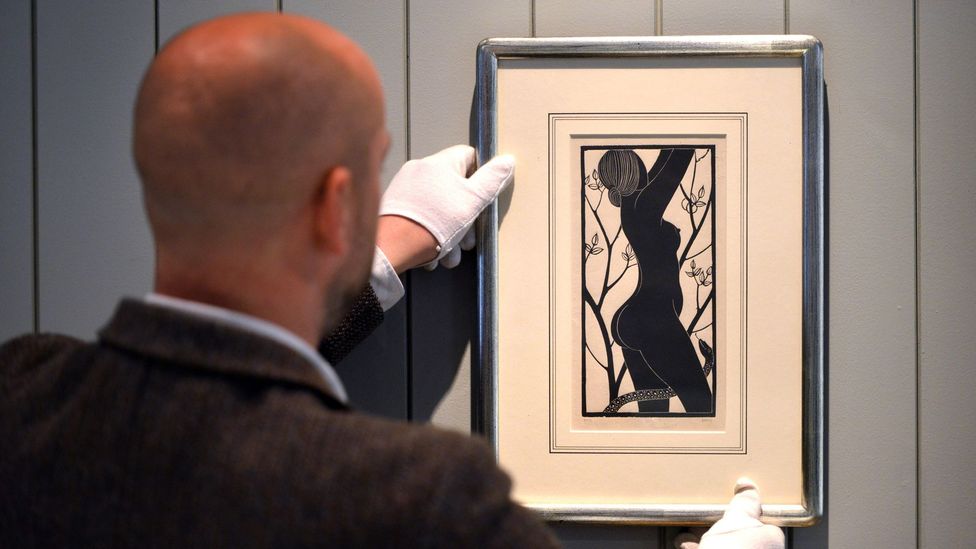
A museum acknowledges an creative person it features was a serial sexual abuser – it's very rare for the fine art globe to put work in this context, writes Fisun Güner.
J
Just how true is the following argument: an artist'due south work should take value in its own right, no affair what sort of life the creative person led, and fifty-fifty if they take damaged or hurt others? Perhaps nosotros might put the answer on a sliding scale, for don't nosotros as a culture, hold it to be true when it comes to some artists, only not others?
Tate U.k.'s electric current Queer British Fine art exhibition, which includes the piece of work of the writer and collagist Kenneth Halliwell, is just i of a recent spate of exhibitions and film screenings that might prompt you lot to ask this question anew. In 1967, in the tiny one-room flat the couple shared in north London, Halliwell bludgeoned his partner, the playwright Joe Orton, to death, before ending his own life. Clinically depressed, isolated and increasingly fearful of losing Orton, who was clearly tiring of him by then, he finally, as we're pithily inclined to put it, 'snapped'. Halliwell left a suicide annotation just saying all would be explained in Orton's diaries, "particularly the latter role".
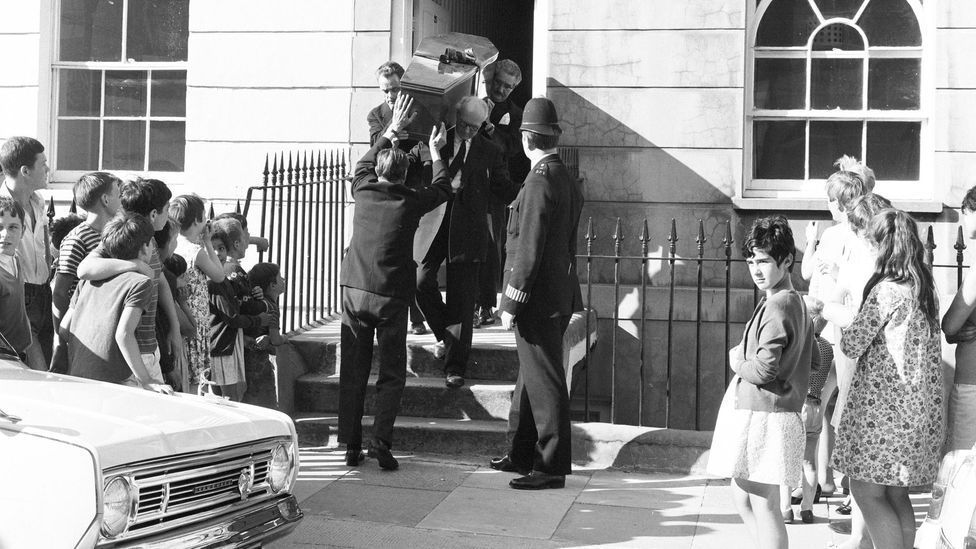
The murder of Joe Orton past the artist Kenneth Halliwell was dramatised past Stephen Frears in the 1987 film Prick Up Your Ears (Credit: Alamy)
Halliwell is generally viewed sympathetically by writers and filmmakers who've documented his and Orton'due south life together. The inclusion of one of Halliwell'southward solo collages at Tate United kingdom appears to have invited no controversy at all. In fact, it's Orton'southward behaviour that's hinted as being selfish or cruelly off-mitt, and we're frequently reminded both of Orton's promiscuity and his rapid success as factors in driving Halliwell to such a drastic action. We're given mitigating psychological complexities that aren't always afforded when terrible crimes are committed, but I also wonder if, at its heart, there'southward an unstated sense here of Orton's culpability in his own murder.
Clearly it's tempting to inquire, would this be the instance had Orton been female? It's interesting to ponder how differently institutions today might view the power dynamics if that relationship had been a heterosexual ane; how eager might they be to establish Halliwell as an creative person in his own right alongside his female victim?
Outline of a dispute
One artist whose work is of far greater importance than Halliwell'due south is the minimalist sculptor Carl Andre. He is still alive and has never been brusk of major museum shows. Andre was married to the artist Ana Mendieta until her decease in 1985, in what many still regard as suspicious circumstances. Mendieta fell to her decease from the couple's high-ascent apartment in New York, and in 1988 Andre was acquitted of second-caste murder.
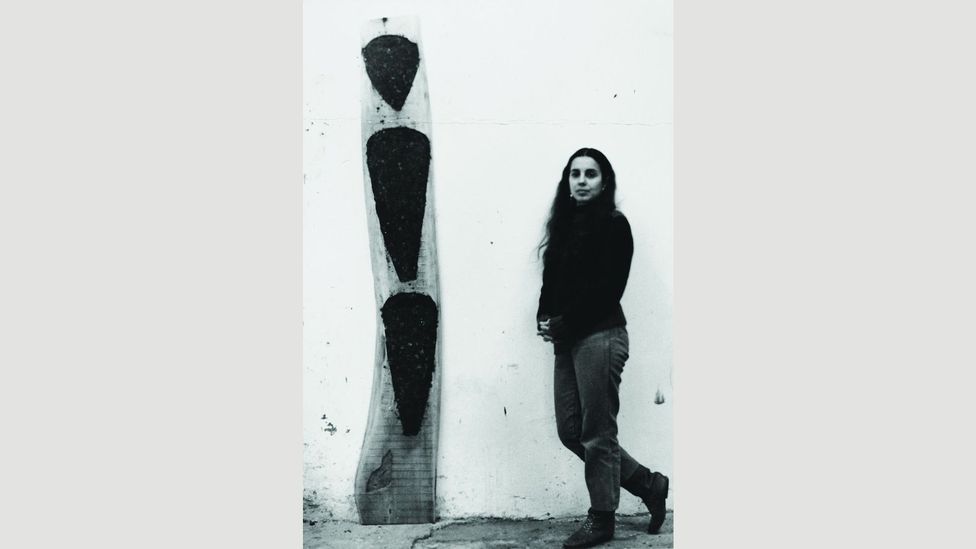
Artist Ana Mendieta vicious to her death from the 34th floor of her New York apartment in 1985 – her husband Carl Andre was charged with her murder, and then acquitted (Credit: Mendieta)
Simply despite the amortization, Andre's exhibitions have been dogged by protests by feminist activists and fellow artists. I performative protestation saw demonstrators cascade and smear red paint exterior a gallery where his piece of work was beingness shown. This was both an homage to Mendieta's powerful performances in which she smeared herself and her surroundings with claret and a reminder of the violence of her expiry. And only terminal month, those attending a individual view of Andre's current testify at the Geffen Contemporary in Los Angeles – an outline of the Museum of Contemporary Fine art (Moca) – were greeted with a carpet of textile laid at the museum'south entrance, on which rows of candles were placed and where outlines of bodies had been painted. Once once again this was strongly reminiscent of the ritualistic aspects of Mendieta's own body-imprint globe works, as well as a an simulated of police forensics. In improver, postcards were handed out with an image of Mendieta accompanied by the text: "Carl Andre is at Moca Geffen. ¿Dónde está Ana Mendieta?" (Where is Ana Mendieta?).
These performative protests manage to go beyond the question of Andre's guilt or innocence to accost the very art institutes whose values they're holding up to question. They demonstrate a gathering ailment and sensitivity around the mode Mendieta's piece of work was long neglected after her death, in dissimilarity to the way Andre'south work connected to exist lauded without so much every bit a blink.
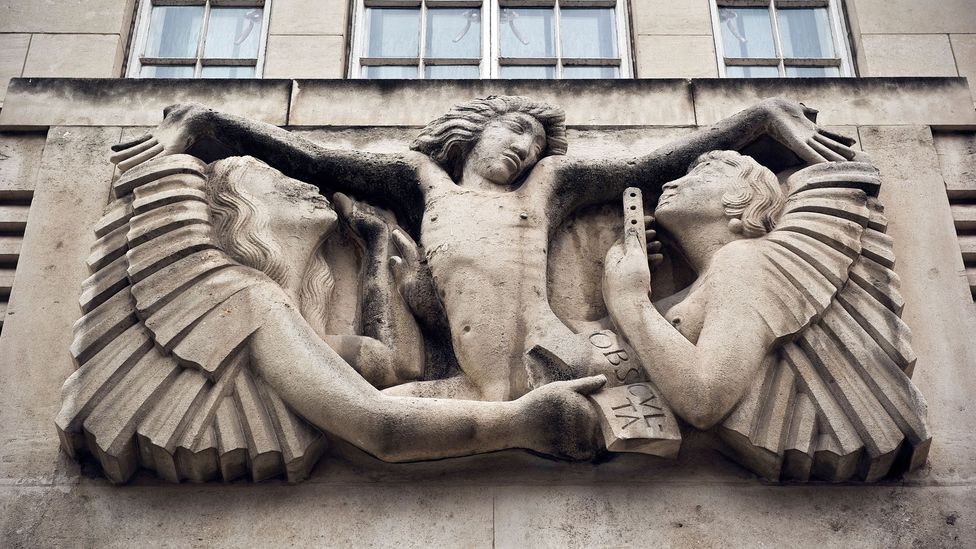
Eric Gill'due south prints, sculptures and reliefs helped define the Art Deco style – his Prospero and Ariel from 1932 adorns the front of the BBC's Broadcasting House (Credit: Alamy)
The protests as well make very clear how art and an creative person'due south biography aren't then easily separated. How nosotros negotiate the two tin be quite circuitous, peculiarly if it's an artist that the establishment culture has long invested in and simply tin can't afford to cede every bit a valued article. Mendieta was, for a long time, simply dispensable to a culture clearly not invested in art by women.
Putting in context
One institution that has been prepared to ask how an artist's life does indeed bear upon the way nosotros receive the piece of work, is the Ditchling Museum of Art + Arts and crafts. This small museum in East Sussex in the south of England is dedicated to the work of the 20th Century sculptor, typeface designer and printmaker Eric Gill and his circle. Gill'southward life equally a series sexual abuser of his ii pubescent daughters was showtime documented in Fiona MacCarthy'south 1989 biography of the artist, as was his incestuous human relationship with his sister.
Only although this information has been in the public realm for most 30 years no previous exhibition of the artist's piece of work has confronted information technology, seeing it equally neither necessary nor relevant. However, it seems articulate that curators shy away from biography merely when information technology'south perceived to be too problematic, since any inclusion volition almost inevitably need more than than a cursory mention – unless, of form, the artist has been expressionless also long for the states to exist fazed. Merely think, for instance, how many times Caravaggio, a known murderer and rumoured pederast, is mentioned when defending the principle of separating the artist from their work.
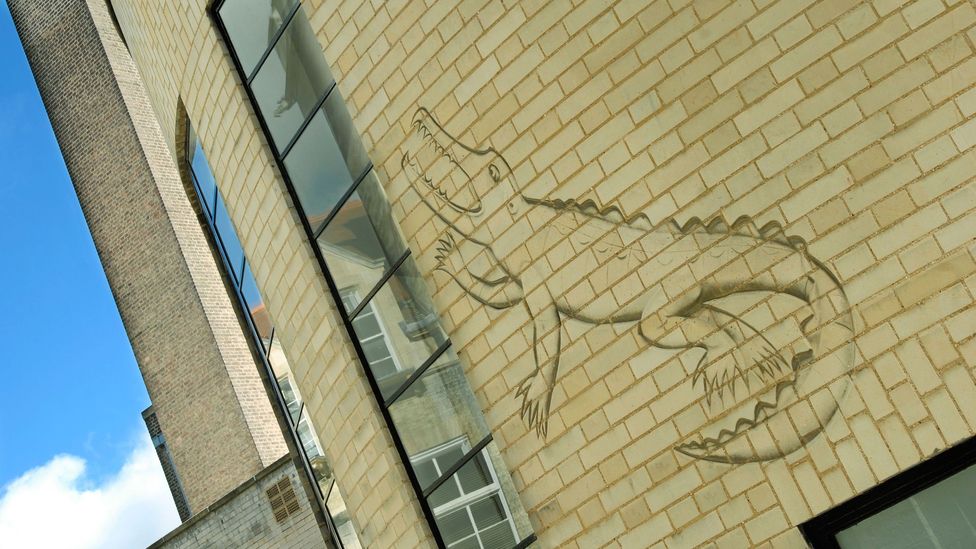
Part of the Arts and Crafts motility, Gill became quite experimental – such as carving this outline of a crocodile into the Mond Laboratory'south wall at Cambridge (Credit: Alamy)
When the Ditchling Museum re-opened in 2013 after a major refurbishment, none of Gill's abuses were addressed, though of class anyone who knew nigh them couldn't assistance but be reminded when confronted past, for case, a sensual and intimate drawing of his immature daughter Petra in the bath. What you saw was altered by what y'all knew.
None of that demands that the piece of work be censored. Only context probably does matter. Gill carved many monuments and relief sculptures throughout his life, including the figures of Prospero and Ariel on the outside of the BBC's old Dissemination Firm headquarters. He was also a practicing Catholic, and carved religious icons and altarpieces for churches and cathedrals throughout the UK, including his impressive Stations of the Cross for Westminster Cathedral. When MacCarthy'southward book came out, in that location was a concerted campaign to rid the cathedral of this celebrated work. One might imagine the mixed feelings of some worshippers when confronted with these 'inappropriate' holy images, which are at that place, after all, to offer moral guidance, sustenance and solace. But information technology seems about take now come to terms with these works.
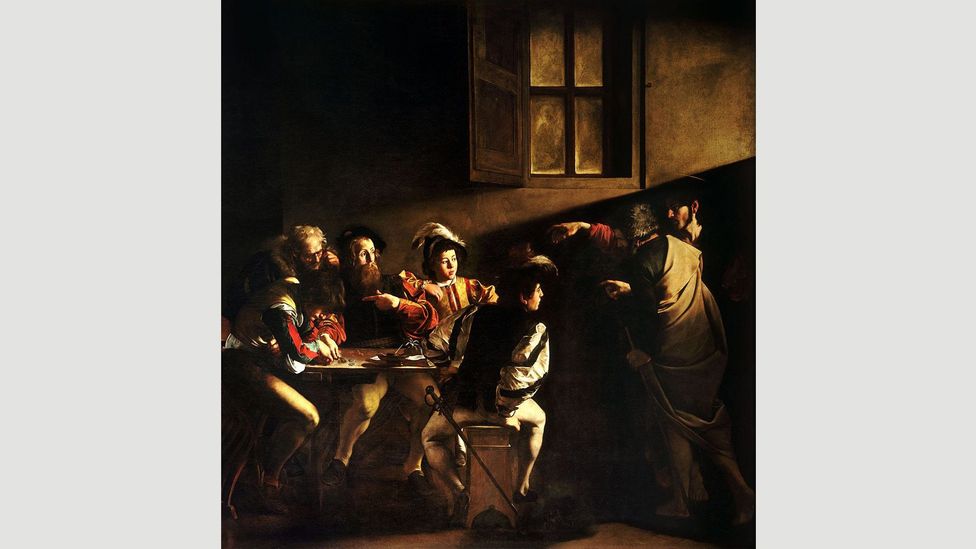
Does time absolve an artist of his or her crimes? Caravaggio was a murderer and a probable pederast, and however that just makes him seem like a 'bad boy' for many (Credit: Wikipedia)
The Ditchling museum itself has now had a radical rethink: central to their electric current exhibition, Eric Gill: The Torso, is the question of how knowledge of Gill's calumniating behaviour affects our impressions of his piece of work, some of which is sexually and anatomically explicit. When organising the exhibition, the museum took advice from several charities who work with sexual abuse survivors.
Gill died in 1940, only we recollect today of others in the public centre and the continued controversy that surrounds them. Film directors Roman Polanski and Woody Allen come to mind and the utterly polarised reactions they both elicit, though both keep to work every bit productively as always.
And of course, it's never just well-nigh the work. What we do when we celebrate an artist is oft to bolster the myth of their life. We do this with Caravaggio exactly because we're fascinated by his bawdy and seductive 'bad boy' image. That roughness and that sexuality makes him feel alive to the states and incredibly mod, as live as the figures in his paintings. And we do this with Oscar Wilde, who we celebrate today for exactly those things that ensured his condemnation in life.
If you would similar to comment on this story or anything else you take seen on BBC Culture, head over to our Facebook page or message us on Twitter .
And if you liked this story, sign up for the weekly bbc.com features newsletter , called "If You Only Read 6 Things This Week". A handpicked option of stories from BBC Time to come, World, Civilisation, Majuscule and Travel, delivered to your inbox every Fri.
Source: https://www.bbc.com/culture/article/20170517-can-you-separate-the-artist-from-the-art
0 Response to "How to Separate Your Art From Yourself or Is That Even Possible"
Enregistrer un commentaire